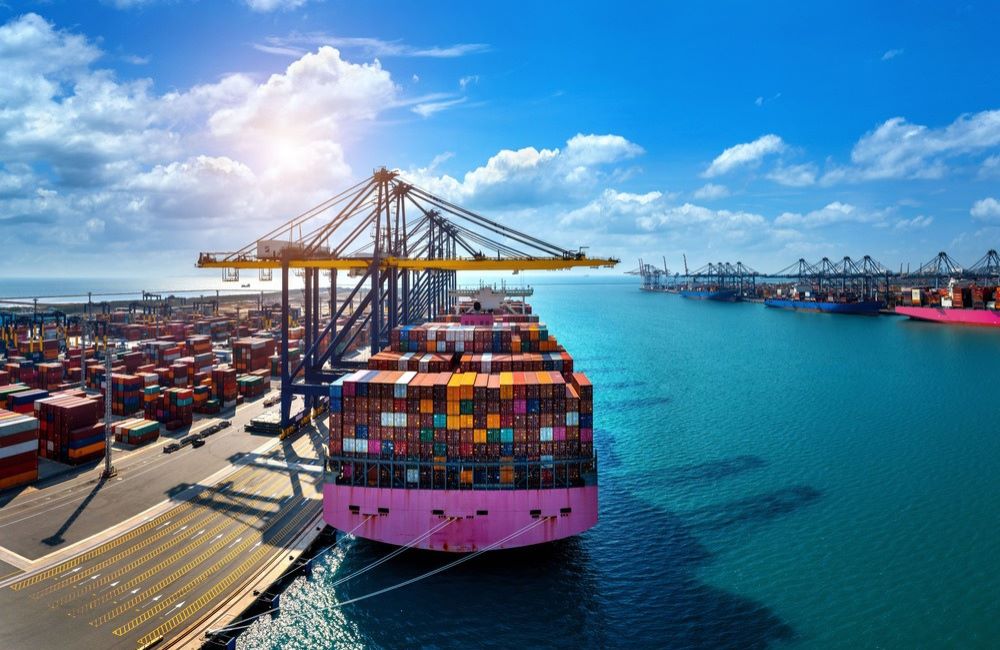
Comprehensive Guide for Importing Top 10 Products from India
Imports are crucial to the Indian economy as it not only satisfy the domestic needs but also provide impetus for a number of industries. This comprehensive guide gives insights for importing Top 10 Import Products from India which would be valuable especially to International buyers intending to import from India.
India has firmly established itself as a key player in global trade, with a wide range of export offerings that highlight its economic strength and manufacturing capabilities. Over the past few decades, India’s export sector has expanded consistently, showcasing the country’s prowess in various industries. Supported by abundant natural resources, India has developed an extensive portfolio of products catering to international markets, including textiles, agricultural goods, petroleum products, jewellery, and more.
India’s rich cultural heritage and commitment to craftsmanship have long attracted international buyers. This has been further supported by global sourcing strategies, such as the “China Plus One” approach, which has made India an increasingly attractive alternative for buyers looking to diversify their supply chains. Countries in the Americas and Europe, in particular, have begun to shift from China due to rising costs and geopolitical tensions, turning instead to India for high-quality products and reliable supply chains.

What are the Top 10 Products Imported from India?
Table of Contents
ToggleIn 2017, India’s export earnings reached an all-time high of $538 billion, underscoring its role as a manufacturing and export powerhouse. Even in the face of challenges like the COVID-19 pandemic, India’s export industry has shown remarkable resilience, with estimates for the 2023 financial year reaching $499.46 billion.
India’s export growth is no longer limited to traditional sectors like textiles and agriculture; it now includes eco-friendly and sustainable goods such as plant-based fabrics, biodegradable products, and upcycled materials. These innovations have bolstered India’s position as a supplier of unique, environmentally conscious products, appealing to a global market that increasingly values sustainability.
As we explore the top products to source from India, we’ll highlight a diverse range of goods that are not only in high demand globally but also reflect India’s evolving manufacturing landscape. From apparel and jewellery to natural materials like cotton, silk, and jute, India continues to be a top destination for businesses seeking quality products with a rich cultural heritage. Let’s delve into some of India’s top exports and examine why they are popular choices for importers worldwide.
Top 10 Products to Import from India
India’s extensive export portfolio underscores its strength across a wide range of industries. With a strong emphasis on quality and versatility, Indian products are highly sought after globally. As global trade dynamics shift, the following categories represent the most popular and lucrative imports from India:
Which Products are Highly Demanded from India?
- Petroleum Products
- Gems and Jewellery
- Textiles and Apparel
- Leather and Leather Products
- Pharmaceuticals and Medicines
- Organic and Inorganic Chemicals
- Automobiles and Equipment Parts
- Agriculture and Food Products
- Handloom and Cotton Yarns
- Engineering Goods
Petroleum Products
India stands as one of the world’s top exporters of refined petroleum products, leveraging its robust refining infrastructure and strategic location. As Asia’s second-largest refiner, India is a key player in the global petroleum market, exporting essential products like petrol, diesel, jet fuel, and liquefied petroleum gas (LPG) to major destinations such as the United States, China, and the Netherlands.
In FY 2023, India’s petroleum exports reached over $103 billion, with the UAE, Singapore, and China as major importers. These exports form a critical segment of India’s global trade, contributing significantly to the economy while meeting global energy demands.
India ranks as the fourth-largest refining hub globally, following the United States, China, and Russia. Its diverse portfolio includes refined fuels and petrochemicals that serve as vital energy sources and raw materials for industries worldwide. With roughly 10% of India’s total export value coming from petroleum products, the country continues to position itself as a trusted energy partner for several nations, including the UAE, Singapore, and the US.
Looking ahead, India’s petroleum sector is also exploring cleaner alternatives, such as biofuels and green hydrogen, showcasing a promising future for sustainable energy exports. By maintaining a steady supply of refined petroleum products to global markets, India continues to solidify its role as an indispensable player in the international energy landscape, fueling economic growth and supporting industrial operations worldwide.

Gems and Jewellery
India is globally renowned for its expertise in crafting fine jewellery, cut and polished diamonds, and other precious gemstones. As the world’s fifth-largest exporter in this sector, India supplies to key markets, including the United States, United Arab Emirates, and the United Kingdom. Gems and jewellery, sourced primarily from regions like Gujarat and Andhra Pradesh, are in high demand worldwide.
India holds approximately 6% of the global market share in this industry, with top exports including natural and lab-grown diamonds, gold jewellery, pearls, and fine pieces. The sector, which accounts for about 13% of India’s total exports, highlights India’s craftsmanship and deep-rooted traditions in gemstone and jewellery-making. India’s combination of centuries-old artistry with modern techniques ensures its place as a preferred supplier for luxury retailers and international brands.
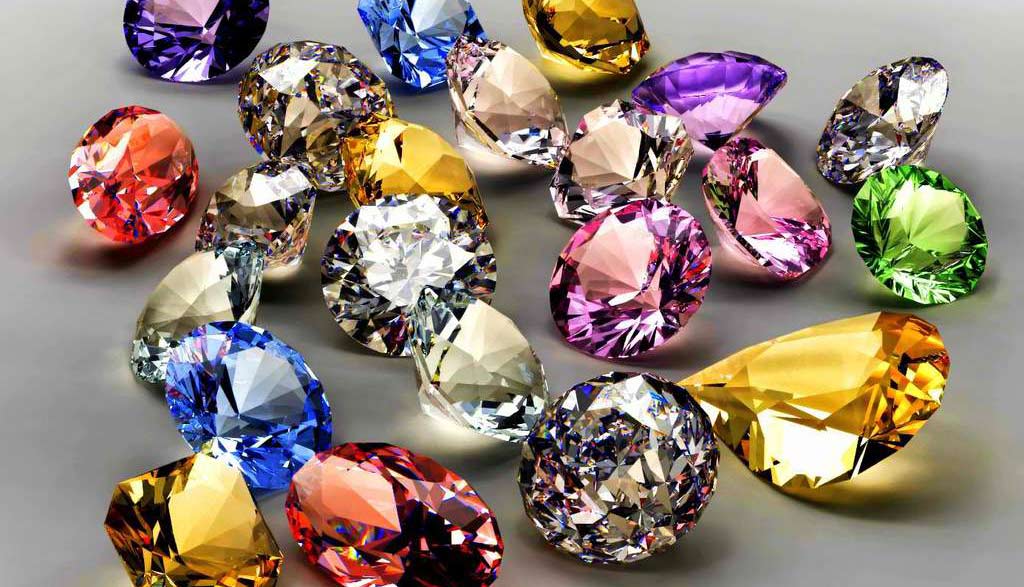
Textiles and Apparels
India’s textile sector is renowned for creating premium cotton, silk, jute, and contemporary clothing and has long been a pillar of the country’s export economy.
India is a leading exporter of textiles, offering a wide array of products, from handwoven fabrics to mass-produced apparel. India’s textile and apparel exports, encompassing both natural and synthetic fibres, are highly sought after in global markets. Indian textiles, admired for intricate designs and natural fibres.
Renowned for its diversity and craftsmanship, the textile industry is a key contributor to the Indian economy and a significant source of export revenue. The demand for Indian textiles continues to grow, solidifying India’s status as a leading player in the international textile market.
Indian Textiles cater to major international brands and retailers across the globe.
The versatility of the industry, coupled with the richness of Indian designs, makes its textiles highly sought after in global markets, especially in the USA, Europe, and Japan.
The United States is one of India’s largest importers, with imports of Indian textiles totalling $2.53 billion. U.S. consumers value Indian textiles for their quality, vibrant colors, and unique traditional designs. Indian garment companies have gained popularity among American buyers due to their stylish designs, comfortable fabrics, and competitive pricing. This steady growth reflects India’s ability to keep pace with global fashion trends and offer a wide variety of textile products.
In 2022, the Indian textile and apparel market was valued at approximately $165 billion, with $40 billion attributed to exports. Experts project a Compound Annual Growth Rate (CAGR) of 10%, with the market potentially reaching $350 billion by 2030. Key export markets include the U.S., U.K., and UAE, with a range of products such as cotton textiles, garments, and both natural and synthetic fiber apparel.
Indian brands like Sabyasachi, Allen Solly, and Peter England have gained international recognition, showcasing India’s fashion expertise. India’s textile industry offers a wide variety of products, from ready-made apparel to festive wear like sarees, salwar suits, and kurtas. Additionally, items like laptop bags, duffel bags, and biker jackets are in demand in markets such as Germany and Australia.
India’s textile and garment industry, which accounts for around 7% of total exports, blends tradition with innovation. With textiles ranging from Benaras silks to Odisha handlooms, India continues to expand its international appeal, poised for sustained growth.
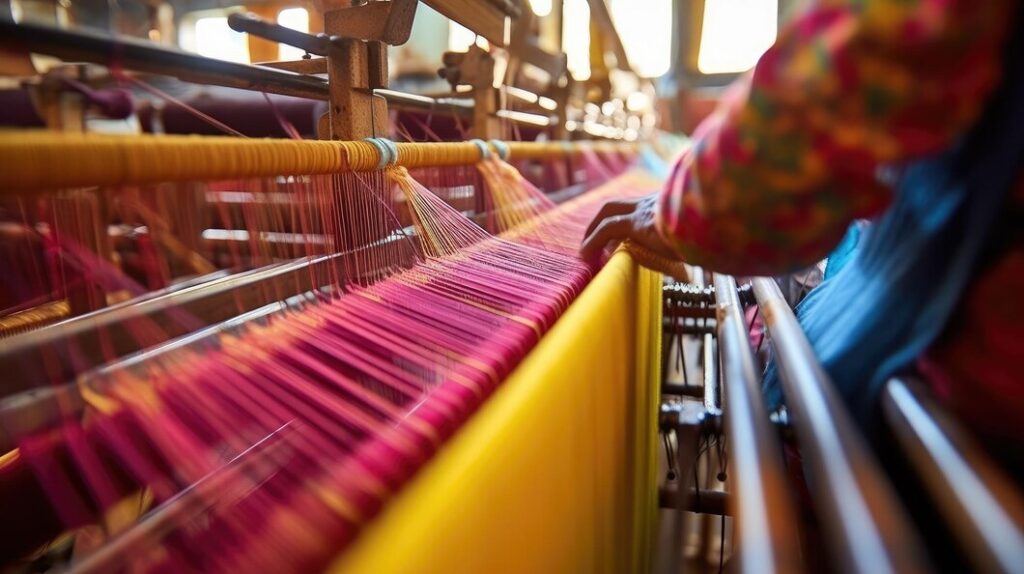
Leather and Leather Products
India’s leather industry is a major player in the global market, producing high-quality goods that appeal to both luxury and everyday consumers. The country is a top exporter of leather products like footwear, bags, belts, jackets, and accessories, with primary markets in the United States and Europe.
Italy, China, Korea, and Hong Kong also source Indian leather due to its superior quality and affordability. Indian manufacturers offer a wide range of leather goods, from mainstream items like wallets and footwear to niche products like handcrafted journals and sports gear. Small businesses within India’s leather industry contribute to unique, artisanal offerings, further enriching the diversity of exports.
India’s leather exports reflect the country’s rich tradition in craftsmanship, durability, and attention to detail, catering to the demands of global markets. As demand for premium leather products rises, India’s leather sector is well-positioned to thrive and grow as a leading exporter.
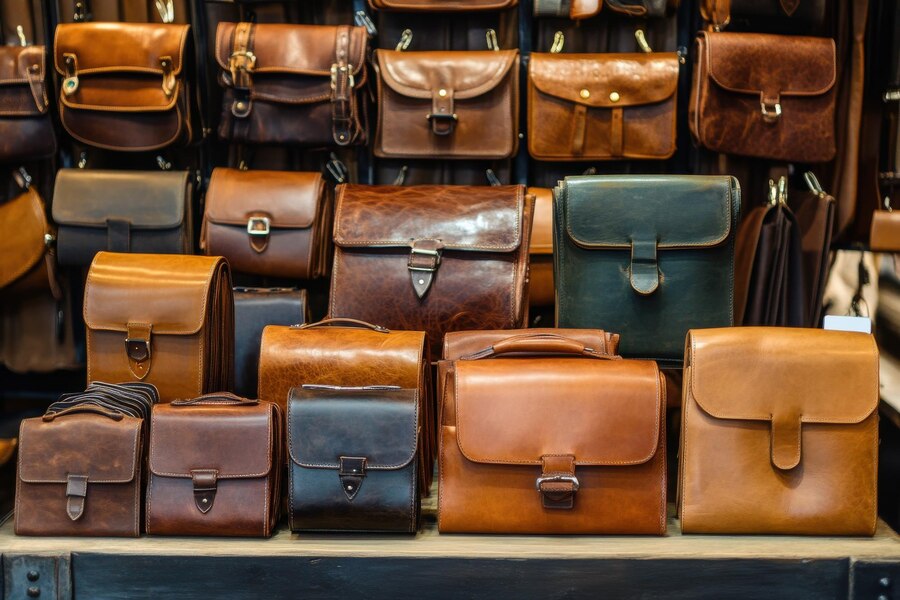
Pharmaceutical Products, Medical Appliances, and Accessories
India has earned the title of the “pharmacy of the world” due to its robust pharmaceutical industry, exporting life-saving medicines to over 200 countries. The pharmaceutical sector contributes approximately 6% of India’s total exports and plays a pivotal role in global healthcare by providing cost-effective generic drugs and active pharmaceutical ingredients (APIs). During the COVID-19 pandemic, the industry showcased resilience by maintaining a steady supply of essential medicines and biopharmaceuticals, further strengthening India’s reputation as a trusted global supplier. This sector continues to grow, with the United States, Africa, and the Middle East being major markets.
In addition to pharmaceuticals, India exports a wide variety of medical devices and supplies, such as surgical disposables, face masks, bandages, and gloves. These products are recognized for their quality and affordability, with the U.S. being a significant importer. Indian manufacturers adhere to strict international safety and quality control standards, ensuring that exported medical devices meet global healthcare needs.
With a comprehensive range of offerings—from vaccines and biosimilars to generic medications and medical disposables—India’s pharmaceutical and medical device sectors significantly contribute to global healthcare infrastructure. Through innovation, research, and development, India continues to address global healthcare challenges, offering affordable solutions to meet the rising demand for effective medicines and medical equipment.

Organic and Inorganic Chemicals
India is a leading exporter of organic and inorganic chemicals, including bulk chemicals, agrochemicals, dyes, and specialty chemicals. These products are vital to industries such as agriculture, textiles, and manufacturing, making India a key supplier for countries like China, the United States, and Brazil.

Automobiles and Equipment Parts
India’s fast-growing automotive sector has positioned the country as a major exporter of vehicles and automotive parts. Rich in iron and steel resources, India supplies both fully-built vehicles and crucial components, such as engine parts and electronic systems, to markets in Africa, Latin America, and parts of Asia. The “Make in India” initiative has bolstered the country’s manufacturing capabilities, driving growth in the export of engineering goods, including machinery and automotive parts. Major export destinations include China, the U.S., and the UAE.
India is gaining recognition as a hub for electric vehicle (EV) components, which are increasingly in demand globally. The country’s skilled workforce, modern manufacturing infrastructure, and adherence to global quality standards make it an attractive sourcing destination for international buyers. Popular products such as headlamps, driveshafts, and axles are exported from key regions like Delhi NCR, Uttar Pradesh, and Maharashtra.
Beyond automobiles, India exports a variety of electric machinery and industrial equipment, including components for food processing and textiles. As the country strives to double the size of its automotive industry by 2024, its export portfolio continues to grow, with vehicles such as cars, trucks, and motorcycles reaching markets in the U.S., Europe, and Africa.
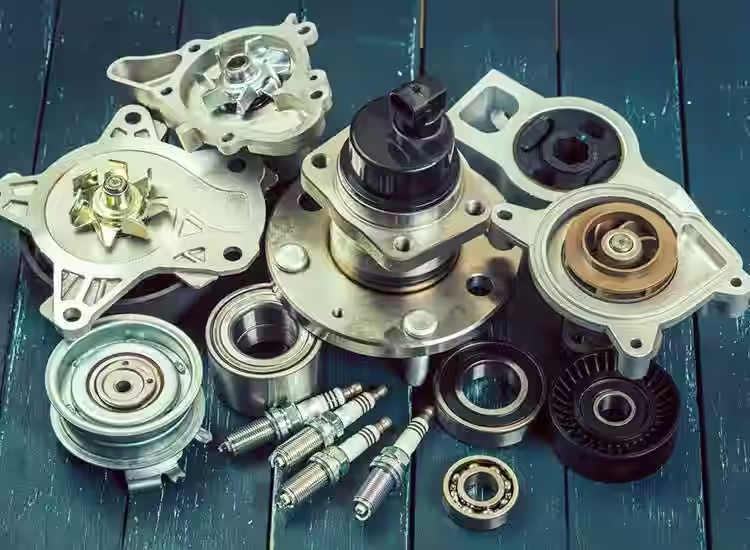
Agriculture and Food Products
India is among the world’s largest exporters of agricultural products, including rice, wheat, spices, tea, coffee, and fresh and processed fruits and vegetables. Countries like Saudi Arabia, Iran, and the United States are major importers of Indian rice and spices. The rising global demand for organic and health-conscious food products has also positioned India as a key supplier in these growing markets.
India’s diverse climate allows for the production of a wide variety of agricultural goods, including fruits like bananas, mangoes, and guavas, and vegetables such as potatoes, cabbage, onions, and tomatoes. India is also the top producer and exporter of ginger and okra. Renowned for its aromatic spices, pulses, and exotic fruits, India’s agriculture sector plays a critical role in the global food supply chain.
Indian tea, particularly from regions like Darjeeling and Assam, is globally recognized for its quality and heritage. With a focus on specialty teas and organic farming, the future of India’s tea exports looks promising, catering to consumers seeking premium and flavorful experiences.
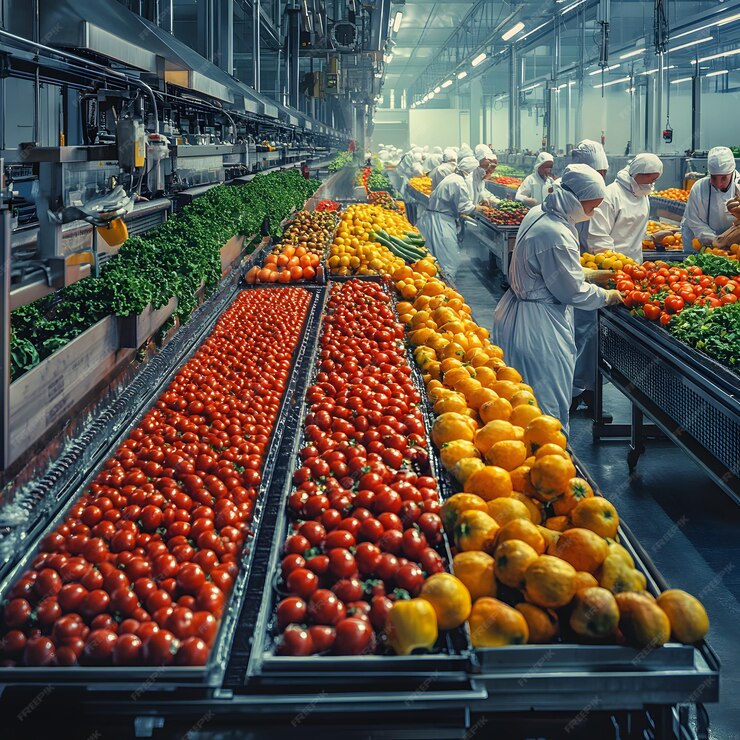
Handloom and Cotton Yarns
India’s handloom and cotton yarn industries have a long tradition of excellence, making the country one of the world’s leading exporters in this sector. Cotton yarns from regions like Gujarat and Tamil Nadu are highly valued globally, supporting the thriving textile industry. As the second-largest cotton producer, India fulfills over 23% of the global demand for cotton, which in turn supports the flourishing handloom industry.
Handloom products such as sarees, dupattas, stoles, and woven fabrics like Banarasi silk, Kanjeevaram sarees, and Khadi cloth, are widely appreciated for their craftsmanship and cultural richness. Indian artisans, combining heritage techniques with modern designs, cater to both traditional and contemporary markets worldwide.
India’s ability to leverage its abundant cotton resources and skilled labor ensures a steady supply of high-quality yarns and textiles. These exports not only boost India’s economy but also support sustainable livelihoods, particularly in rural areas, cementing India’s role in the global textile landscape.
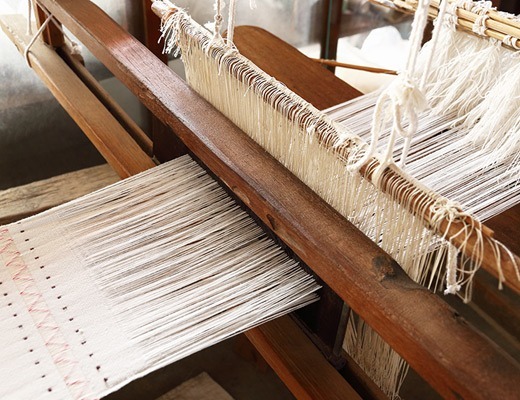
Electronic Goods, Machinery, and Equipment
India’s engineering sector is a major exporter of machinery, equipment, and components for industries such as construction, energy, and agriculture. Indian engineering goods are highly valued in markets like North America, Europe, and the Middle East for their cost-effectiveness and reliability. Government initiatives like “Make in India” have further strengthened this sector, boosting manufacturing and export growth.
India’s electronic goods exports are experiencing rapid growth, driven by increasing global demand for technology products such as mobile phones, laptops, and consumer electronics. Programs like Digital India have positioned the country as a growing force in the global electronics market, with strong governmental support for innovation and digital advancement.
In addition to electronics, India exports machinery and equipment, including industrial machinery, agricultural tools, and technological devices. The sector’s growth has been bolstered by modernized manufacturing processes and heightened demand from countries like the U.S., which relies on Indian exports to support infrastructure, industrial, and technological needs. With a strong network of small and medium enterprises (SMEs), India continues to produce a diverse range of machinery products.
India’s robust manufacturing capabilities in electronics and machinery have reinforced its competitive position in global markets. By continuing to innovate and meet international standards, India’s exports in these sectors are poised for sustained expansion, contributing significantly to its economic growth and reinforcing its role in global supply chains.

Conclusion
Key Highlights of India’s Export Sector:
– Major Exports: India’s top exports include petroleum products, gems and jewellery, textiles, garments, medicines, organic and inorganic chemicals, machinery, iron and steel, cars, dairy products, and tea.
– Top Destinations: The United States, UAE, Netherlands, China, Bangladesh, Singapore, Brazil, UK, Saudi Arabia, Indonesia, Germany, and Hong Kong are the leading importers of Indian goods.
– Diverse Product Range: India’s exports span a wide range of sectors, from leather goods and automobiles to pharmaceuticals and cereals, making the country a global trade leader.
– Economic Impact: Exports drive economic growth by creating jobs, improving living standards, and contributing significantly to India’s GDP.
– Future Growth: India’s focus on agriculture, innovation, and international partnerships will ensure continued growth in its export industry. Emerging markets like Africa and Latin America offer new opportunities for diversification.
India’s export sector, built on a foundation of rich natural resources and skilled labour, continues to flourish in a competitive global market. With a strong trade relationship with the USA and expanding reach into non-traditional markets, India’s future as a global export leader looks promising.
India’s export landscape is both diverse and dynamic, offering an array of high-demand products across various sectors. From high-quality gemstones and textiles to advanced pharmaceuticals and engineering goods, India’s exports cater to global markets in innovative and sustainable ways. For businesses and importers, India presents vast opportunities to source premium products that reflect its heritage, craftsmanship, and evolving industry standards.
Also read our post on “An essential guide for buyers sourcing from india“



